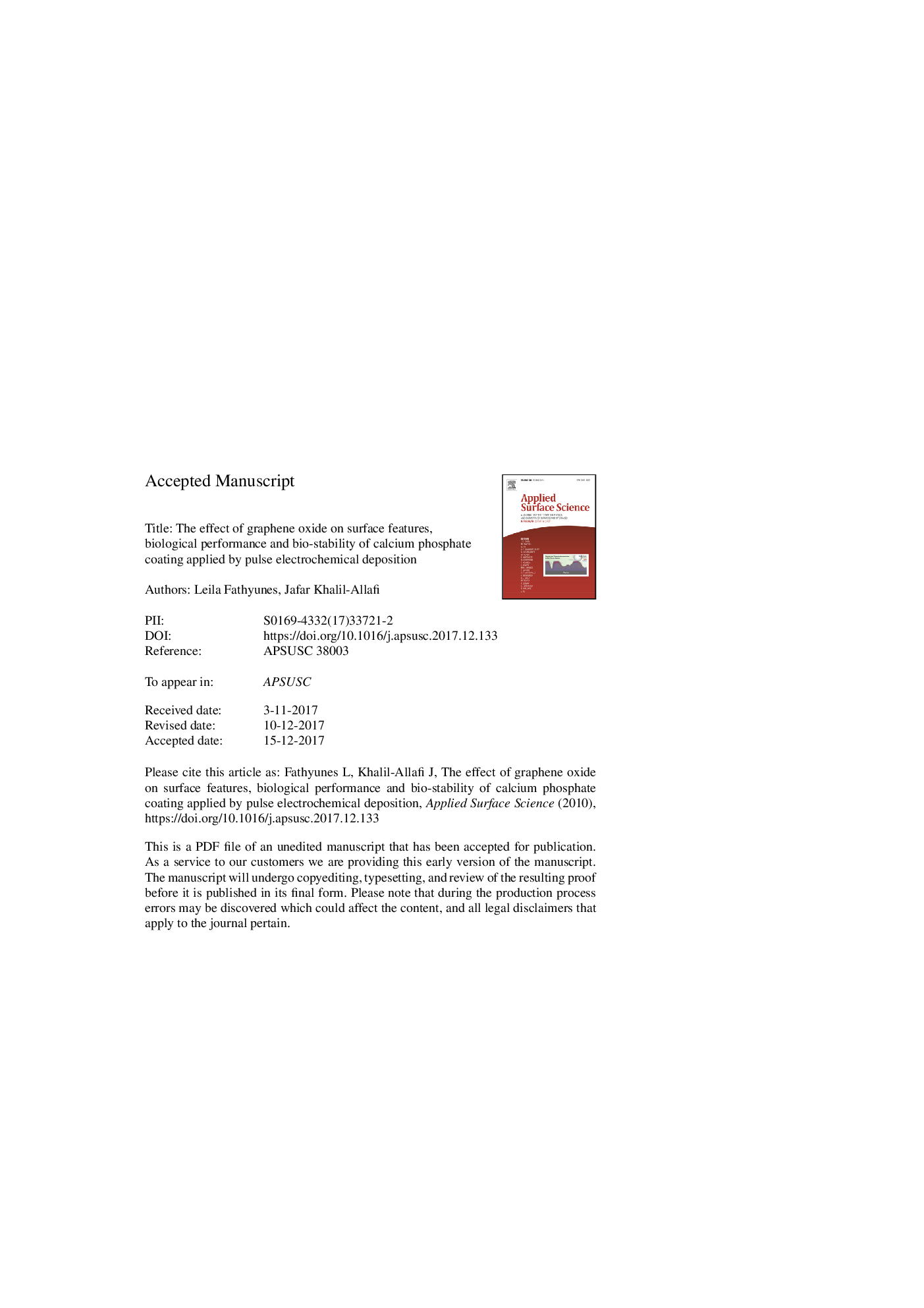| Article ID | Journal | Published Year | Pages | File Type |
|---|---|---|---|---|
| 7835573 | Applied Surface Science | 2018 | 39 Pages |
Abstract
In the current study, the effect of second phase of graphene oxide (GO) on the surface features and biological behavior of calcium phosphate (CaP) coating was evaluated. To do so, the GO-CaP composite coating was applied on TiO2 nanotubular arrays using pulse electrochemical deposition. The SEM and AFM images showed that, the CaP-based coating with uniform and refined microstructure could be formed through its compositing with GO sheets. The biological assessment of the coatings was also conducted by cell culture test and MTT assay. Based on findings, the GO-CaP coating showed the better biocompatibility compared to the CaP coating. This could be owing to the fact that the composite coating provided the lower roughness, moderately wettable surface with a contact angle of 23.5°â¯Â±â¯2.6° and the higher stability in the biological environments because of being involved with only the stable phase of CHA. However, in the CaP coating, spreading of cells could be limited by the plate-like crystals with larger size. The higher solubility of the CaP coating in the cell culture medium possibly owing to the existence of some metastable CaP phases like OCP in addition to the dominant phase of CHA in this coating could be another reason for its less biocompatibility. At last, the CaP coating showed the higher apatite-forming ability in SBF solution after its compositing with GO.
Related Topics
Physical Sciences and Engineering
Chemistry
Physical and Theoretical Chemistry
Authors
Leila Fathyunes, Jafar Khalil-Allafi,
